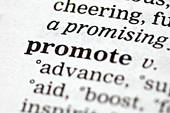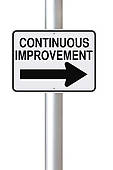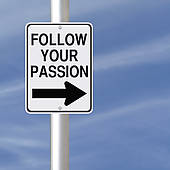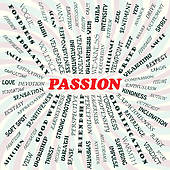Pretty girl promoting lap top on the beach
Do you know who in your group or associated with your group is a honest to goodness promoter of your charity along with your group? How about your detractors? Are passives easy to identify?
This concept is very well presented in the business book by authors Fred Reichheld and Bob Markey, titled “The Ultimate Question 2.0, How Net Promoter Companies Thrive in a Customer-Driven World”. In the second of the book series on Net Promoter companies the authors continue and refine their ideas on how customers fall into one of three very distinct categories, promoter, passives, and detractors. They go into very good detail on how to use analysis and statistics to find each group and why it pays off to make this determination for various ROI identifies or just in loyalty sales and future growth.
When you think of people who promote things, often what comes to mind is megaphones and loud speakers. But promoters are just people who manage to talk up your cause or your group in a positive way. They may wear hats or shirts with the name of the group as well. They are inspired and promotional of the groups message and image. They show passion for the cause.
These members identified as promoters and associated friends and family live the message of the cause and they are very strong advocates of the other members who are also promoters!
Promoters are the most likely to be in tune with the “voice of the customer”. This concept stems from the many management plans which promote quality and is the single biggest concept behind the empowered volunteer. For many of you in business or having taken business courses quality plans from the past included Total Quality Management, Six Sigma, Lean Manufacturing, and of course combinations of those labeled Lean/Six Sigma.
For a while during the 90′s even the U. S. Navy had Total Quality Leadership (TQL), with mainly the name as the only difference between TQM and TQL. Today the U. S. Navy has Six Sigma quality systems and reportedly embraces the concept of the empowered worker where it most certainly did not support lower rank empowerment before. This is because the sea going service was not mature enough to allow empowerment of it’s non-managerial members (read enlisted volunteer members) when TQL was instituted. From what I have read Six Sigma has made healthy contributions for today’s Navy!
In my past I have been trained in all of these and hold certifications in several continuous improvement training methods. They all have a concept that includes empowering the lowest worker with the most responsibility and accountability as well as listening to the customer, both internal and external customers. The empowered volunteer is simply another application of the empowered worker from Lean Manufacturing teaching.
All volunteer groups have the potential of supporting three types of customers, those from the cause they serve, their group members and associated family, and the general public or businesses from which they develop relationships and derive much if not all of their resources.
So how do you identify promoter types for your group?
The authors of The Ultimate Question 2.0 suggest something so simple that it even applies outside industry and I am suggesting it would apply nicely to volunteer groups who want to add to their SWOT analysis. Survey your three customer groups and ask them one question, “Would you recommend this volunteer group to your friends?” On the survey have a range of responses from zero to ten, with ten being the best and zero the least. The authors say that a promoter is someone who responds with an eight or better.
Nothing brings in willing volunteers like proper passion for a worthy cause!
Knowing who your promoters are and being able to motivate them on the behalf of the group is worth more to the future success of your volunteer group than just about anything else you can do! If surveys are not in order another way to identify the promoters is through their passion observed over time!
I have written about passion in volunteer groups before, use the search feature on this blog to find some of those posts for further reading.
Proper passion directed for worthy causes is one of the biggest draws for new members. When people enjoy themselves the volunteering becomes less work and more fun. People flock to fun things! Birds of a feather flock together and promoters like to be among other promoters and also to enrich or uplift passives into promoters! This is one feature of successful leadership which can’t be over emphasized. One really likable passionate promoter in a group can transform that group into a bunch of promoters over time. That is one huge way to ensure the future of the group will be a long and healthy one.
I will write in future posts about how to motivate and focus promoters as well as identifying and converting passives and detractors. The authors of The Ultimate Question 2.0 targeted their book towards business and the collection of data. The subsequent data collection and analysis over time is much more trouble than the average volunteer group can justify. I will provide some ideas and suggestions for finding each group without all of the data search needed.
The empowered volunteer by the way would almost certainly be a labeled a promoter!











